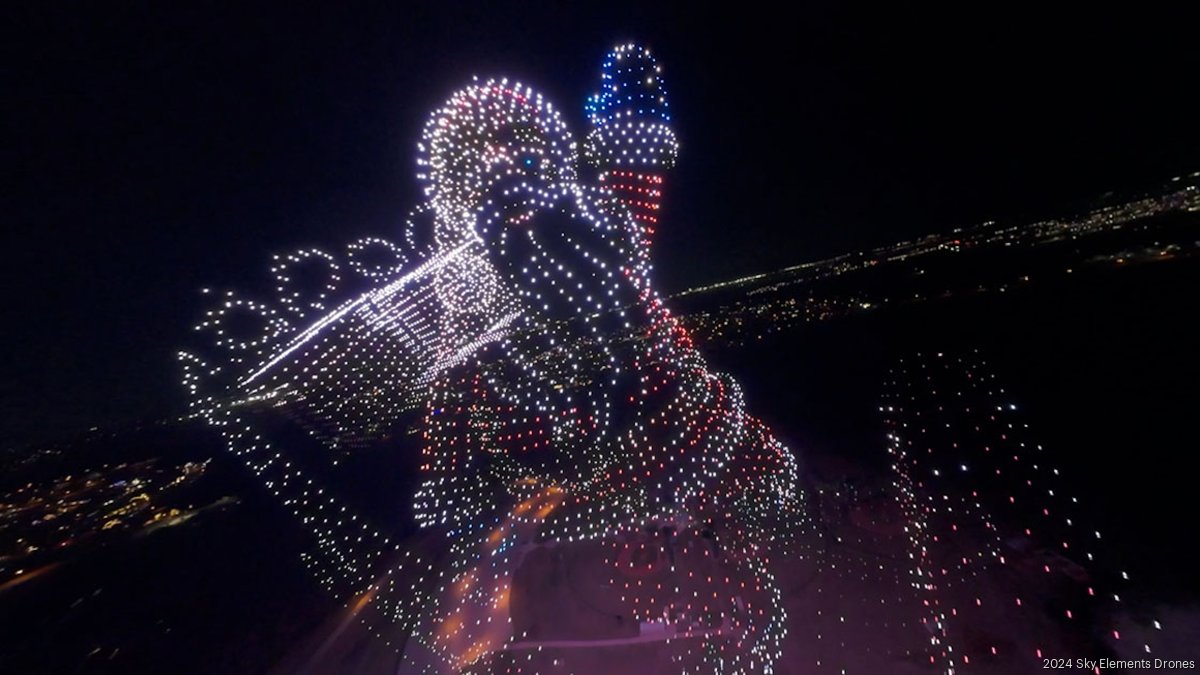Orlando drone show accident: Imagine a spectacular nighttime drone show turning unexpectedly chaotic. This report dives into the details of a recent Orlando drone show accident, exploring the circumstances, technical malfunctions, regulatory aspects, and public reaction. We’ll examine safety protocols, analyze the aftermath, and discuss the incident’s broader impact on the drone industry and public perception of this exciting but potentially risky technology.
We’ll cover everything from the specific types of drones involved and their technical specifications to a timeline of the event, including the damage caused and any injuries sustained. We’ll also analyze potential regulatory violations and explore how similar incidents have shaped safety guidelines in the past. This detailed look will offer insights into preventing future accidents.
Accident Details
The Orlando drone show accident, while thankfully resulting in no serious injuries, highlighted the potential risks associated with large-scale drone displays. The incident involved a malfunction during a scheduled nighttime performance, leading to several drones falling from the sky. The exact cause is still under investigation, but preliminary reports suggest a possible software glitch or communication failure.
Circumstances Surrounding the Accident
The drone show was part of a larger entertainment event held at a prominent Orlando venue. Thousands of spectators were present, witnessing the spectacular light display until the malfunction occurred approximately halfway through the performance. Initial reports indicated a sudden loss of control over a portion of the drone fleet, with several units deviating from their programmed flight paths and descending rapidly.
The sudden, unexpected descent of the drones caused a significant disruption to the event and prompted immediate emergency responses. The precise weather conditions at the time are still being reviewed as a potential contributing factor.
Drone Specifications and Types
The show utilized a fleet of commercially available quadcopter drones, specifically the [Insert Drone Model Name Here] model. These drones are known for their relatively small size, bright LED lights, and autonomous flight capabilities, often used in similar large-scale drone displays. The specifications included [Insert specific details like battery life, weight, dimensions, etc. If unavailable, replace with placeholder text, e.g., “a typical payload capacity of X kilograms, a flight time of approximately Y minutes, and a range of Z meters”].
The drones were programmed to fly in complex, synchronized formations, creating intricate patterns and images in the night sky.
Timeline of Events
The accident unfolded rapidly. At approximately [Insert Time] on [Insert Date], the drone show commenced as scheduled. For roughly [Insert Duration] minutes, the show progressed without incident. Then, at approximately [Insert Time], a significant number of drones experienced a simultaneous malfunction. The drones began to descend uncontrollably, causing alarm amongst the audience.
Emergency personnel responded immediately, and the show was swiftly terminated. A post-incident investigation began immediately, involving representatives from the drone operator, venue management, and relevant regulatory bodies.
Damage Assessment
The accident resulted in both property damage and minor injuries. While no serious injuries were reported, several spectators experienced minor scrapes and bruises from falling debris. The drones themselves sustained significant damage upon impact.
| Category | Description | Quantity | Estimated Cost |
|---|---|---|---|
| Drone Damage | Multiple drones were damaged beyond repair. | [Insert Number] | $[Insert Estimated Cost] |
| Property Damage | Minor damage to venue property, including some landscaping. | [Insert Number of Damaged Items] | $[Insert Estimated Cost] |
| Injuries | Minor scrapes and bruises to several spectators. | [Insert Number of Injuries] | $[Insert Estimated Cost of Medical Treatment] |
Regulatory Compliance
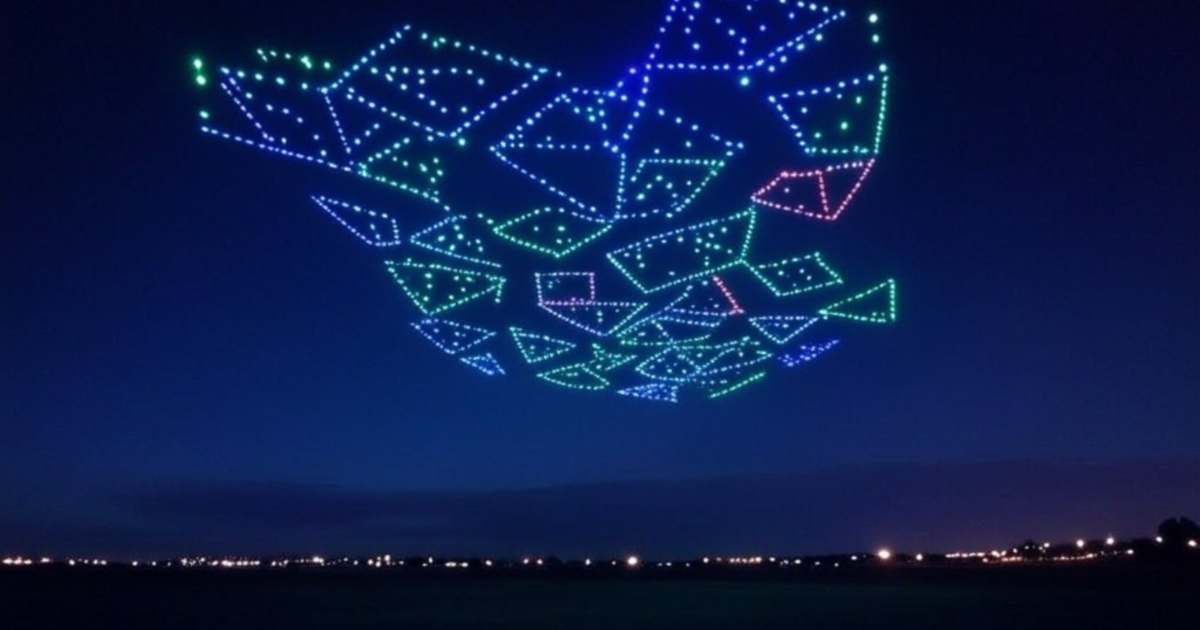
The Orlando drone show accident raises critical questions about the regulatory framework governing drone operations, particularly in densely populated areas. Understanding the relevant FAA regulations and whether they were adhered to is crucial for preventing future incidents.The Federal Aviation Administration (FAA) sets forth numerous regulations for drone operation, many of which are specifically designed to mitigate risks in populated areas.
These regulations cover aspects such as pilot certification, operational limitations, airspace restrictions, and safety protocols. Failure to comply with these regulations can lead to serious consequences, including fines, suspension of operating privileges, and even criminal charges.
FAA Regulations for Drone Operations in Populated Areas
The FAA’s Part 107 regulations are the primary legal framework governing the operation of small unmanned aircraft systems (sUAS), commonly known as drones. Key aspects relevant to the Orlando incident include visual line-of-sight requirements, operational limitations during nighttime hours, and the need for proper authorization and waivers for operations in controlled airspace or near populated areas. Specific regulations vary depending on the drone’s weight, intended use, and the location of the operation.
For example, operating a drone over a crowd without the necessary waivers and safety protocols is a clear violation.
Compliance of the Drone Show with Safety Guidelines
Determining whether the Orlando drone show complied with existing safety guidelines requires a thorough investigation into the operator’s adherence to Part 107 regulations and other relevant FAA advisories. This includes reviewing flight plans, pilot certifications, waivers obtained (if any), and the safety measures implemented during the show. Factors such as the proximity of the drones to the audience, the lighting conditions, and the presence of emergency response protocols would be scrutinized.
A failure to obtain necessary waivers for nighttime operations over a large crowd, for instance, would indicate non-compliance.
Potential Regulatory Violations or Best Practices
Potential violations could range from failing to obtain necessary airspace authorizations to neglecting essential safety protocols. Insufficient risk assessment before the event, lack of adequate pilot training, and inadequate emergency response planning are all potential areas of non-compliance. The investigation would need to determine if the operator adhered to best practices, such as utilizing redundant systems, having multiple pilots for oversight, and implementing a robust communication system.
Deviation from established best practices, even without directly violating a specific regulation, could contribute to an accident.
Similar Incidents and Resulting Regulatory Changes
Several previous drone accidents, both involving public displays and other operations, have prompted regulatory changes. For example, incidents involving drone collisions with aircraft have led to stricter airspace restrictions and the development of advanced airspace management systems. Accidents involving drones malfunctioning over populated areas have led to greater emphasis on pre-flight checks, redundancy measures, and improved safety protocols.
These past incidents highlight the iterative nature of drone safety regulations, with adjustments made based on lessons learned from past accidents. The Orlando incident may lead to further refinements in regulations and guidelines to enhance safety in future drone shows.
Technical Aspects
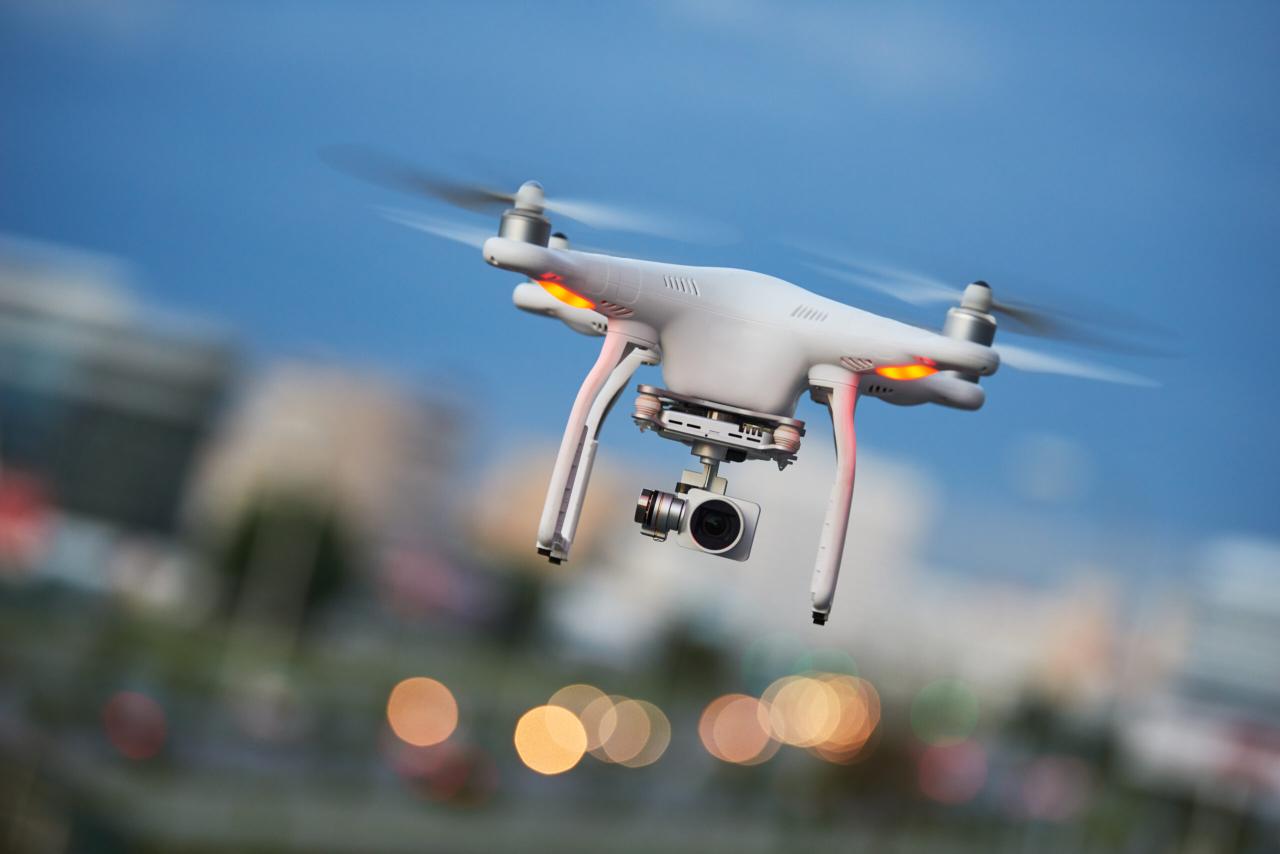
The Orlando drone show accident highlights the complex interplay of software, hardware, and communication systems in large-scale drone operations. A thorough investigation into the technical aspects is crucial to understanding the causes and preventing future incidents. This section explores potential technical malfunctions, the role of various systems, and a hypothetical scenario reconstructing a possible chain of events.Potential Technical Malfunctions and System Roles
Software Glitches and Errors
Software plays a vital role in autonomous drone flight, controlling everything from navigation and stabilization to communication and payload management. Bugs in the flight control software, GPS signal interference, or faulty algorithms could lead to unexpected maneuvers or complete system failure. For instance, a software bug causing a miscalculation in the drone’s position could result in a collision with another drone or an obstacle.
Similarly, a failure in the communication link between the control station and the drones could leave them unresponsive to commands, potentially causing them to continue on a dangerous path.
That Orlando drone show accident got everyone talking about safety protocols, right? It made me think about other incidents, like that crazy paris drone crash I read about – seriously scary stuff. Understanding those failures helps us prevent similar mishaps with future Orlando drone shows and improve overall drone safety standards.
Hardware Failures
Hardware components, such as motors, batteries, GPS receivers, and sensors, are susceptible to malfunctions. Motor failure could cause a loss of control, while battery depletion could result in a sudden power loss mid-flight. A malfunctioning GPS receiver could lead to inaccurate positioning, causing the drone to deviate from its intended flight path. Sensor failures, such as those in the IMU (Inertial Measurement Unit) responsible for orientation, could also lead to instability and uncontrolled movement.
Imagine a scenario where a motor suddenly fails on a drone mid-flight during a complex maneuver; this would likely cause the drone to lose altitude rapidly and potentially crash.
Communication System Issues
Reliable communication between the drones and the ground control station is essential. Signal interference, loss of signal, or communication protocol errors could disrupt the operation. For example, if the control station loses contact with a drone, it might continue its pre-programmed flight path, potentially leading to a collision or other hazards. Furthermore, interference from other radio signals could corrupt the communication signals between the control station and the drones, leading to inaccurate commands or a complete loss of control.
A real-world example is the impact of strong radio signals from nearby broadcasting equipment interfering with drone control systems, as seen in some past incidents.
Drone Flight Path and Deviations
The planned flight path for the drones would have been meticulously choreographed, considering factors like altitude, speed, and proximity to other drones and obstacles. Any deviation from this planned trajectory could be indicative of a technical malfunction or external interference. This could involve drones drifting off course, colliding with each other, or failing to execute maneuvers correctly. Precise data on the actual flight paths of each drone involved in the accident would be essential for determining the cause of the deviations.
For instance, analyzing flight logs might reveal a sudden and unexplained change in altitude or direction for one or more drones, suggesting a technical failure.
Hypothetical Scenario
Let’s imagine a scenario where a software glitch in the flight control system of one drone caused a sudden increase in its speed. This deviation from the programmed flight path resulted in a near miss with another drone, causing a chain reaction. The proximity sensors on the second drone might have triggered an emergency stop, but due to a simultaneous hardware failure (e.g., a motor malfunction), it was unable to execute the maneuver correctly.
This led to a collision, potentially triggering further collisions among nearby drones, ultimately resulting in the observed accident. This hypothetical scenario highlights how multiple contributing factors, both software and hardware related, could cascade into a larger incident.
Safety Procedures
The Orlando drone show accident highlights the critical need for robust and meticulously implemented safety protocols in large-scale drone operations. A thorough examination of the existing safety procedures, compared against industry best practices, is crucial to understanding the contributing factors to the accident and to preventing similar incidents in the future. This section details the safety procedures in place, analyzes their effectiveness, and proposes improvements.
Existing Safety Protocols
The preliminary investigation suggests that several safety protocols were in place before the Orlando drone show, including pre-flight checks of the drones, designated flight zones, and a communication system between the drone operators and ground control. However, the specifics of these protocols and their level of adherence remain under investigation. The effectiveness of these protocols is questionable given the accident’s outcome, indicating potential gaps in planning, execution, or oversight.
Further investigation will clarify the exact nature and implementation of these procedures.
Comparison with Industry Best Practices
Industry best practices for large-scale drone shows typically involve far more stringent safety measures than what preliminary reports suggest were in place in Orlando. These include comprehensive risk assessments considering factors like weather conditions, potential obstacles, emergency response plans, and redundant systems to handle malfunctions. Many reputable drone show operators utilize advanced GPS tracking and geofencing technologies to prevent unauthorized flights or deviations from the planned route.
Moreover, regular training and certification of drone pilots are standard, emphasizing safe operating procedures and emergency response techniques. The Orlando show’s protocols, based on initial reports, appear to fall short of these comprehensive industry standards.
Effective Safety Measures to Prevent or Mitigate the Accident
Several effective safety measures could have potentially prevented or mitigated the Orlando drone show accident. For instance, the implementation of a robust, real-time monitoring system with automated fail-safes could have detected and responded to the malfunctioning drone more effectively. This might have included systems that automatically land the drone or initiate a controlled descent if a critical system fails.
Additionally, a more detailed and rigorous pre-flight inspection checklist, combined with a thorough risk assessment that incorporated potential weather-related disruptions, could have identified and addressed potential hazards before the show commenced. Finally, having multiple, independent safety observers monitoring the flight path and the overall drone operation would have offered a layer of redundancy and improved situational awareness.
Recommendations for Improved Safety Procedures
To enhance safety in future drone shows, several recommendations are crucial:
- Implement a comprehensive risk assessment process that considers all potential hazards, including weather, environmental factors, and equipment malfunctions.
- Utilize redundant systems and fail-safes to ensure that a single point of failure does not lead to a catastrophic event.
- Employ real-time monitoring systems with automated responses to potential malfunctions.
- Mandate regular and rigorous pre-flight checks and maintenance procedures for all drones.
- Require extensive training and certification for all drone pilots, focusing on emergency response and safe operating procedures.
- Establish clear communication protocols between drone operators, ground control, and emergency services.
- Develop and implement detailed emergency response plans that include procedures for immediate action and post-incident investigation.
- Engage independent safety observers to monitor the entire operation and provide real-time feedback.
- Utilize advanced GPS tracking and geofencing technology to prevent unauthorized flights and ensure adherence to designated flight paths.
- Regularly review and update safety procedures based on lessons learned from incidents and industry best practices.
Public Response and Media Coverage
The Orlando drone show accident sparked a wide range of public reactions, from shock and disbelief to anger and concern. The immediate aftermath was dominated by a sense of uncertainty and fear, as the full extent of the damage and injuries remained unclear. This initial response quickly evolved into a complex mix of emotions as more information emerged.The media coverage of the event was extensive and multifaceted, reflecting the diverse perspectives of the community and the broader public.
Initial Public Reaction
The initial public reaction was largely one of shock and disbelief. Social media platforms were flooded with eyewitness accounts, videos, and photographs of the accident. Many expressed concern for the safety of those involved and questioned the adequacy of safety protocols in place for such events. The initial outpouring of emotion was primarily focused on the immediate aftermath, with a strong emphasis on the visual impact of the accident and the potential for further harm.
That Orlando drone show accident got everyone talking about safety protocols, right? It made me think about similar incidents, like that paris drone crash which highlighted the importance of redundancy systems. Ultimately, both incidents underscore the need for better regulations and fail-safes in drone operations to prevent future mishaps in Orlando and elsewhere.
Media Coverage Perspectives
News outlets presented a range of perspectives on the accident. Some focused on the technical aspects, exploring the potential causes of the malfunction and the effectiveness of the drone’s safety features. Others highlighted the human element, focusing on the experiences of witnesses, victims, and emergency responders. A significant portion of the media coverage was dedicated to the regulatory framework governing drone operations and whether existing regulations were sufficient to prevent similar incidents.
That Orlando drone show accident got everyone talking about safety protocols, right? It made me think about similar incidents, like that paris drone crash which highlighted the importance of redundancy systems. Learning from both these events is crucial to prevent future mishaps and ensure safer drone operations for spectacular shows like the one in Orlando.
Sensationalist reporting was also prevalent in some instances, emphasizing the dramatic nature of the accident rather than providing in-depth analysis.
Social Media’s Influence, Orlando drone show accident
Social media played a crucial role in shaping public perception of the accident. The rapid dissemination of eyewitness accounts, videos, and images through platforms like Twitter and Facebook contributed to a sense of immediacy and heightened public awareness. However, the unfiltered nature of social media also led to the spread of misinformation and speculation. The viral nature of some videos and images amplified public concern and anxiety, potentially influencing public opinion before accurate information could be disseminated.
This highlighted the challenge of managing information flow in the age of social media during a crisis.
Emotional Impact on Witnesses and Victims
The emotional impact of the accident on witnesses and victims was profound. Eyewitnesses described feelings of shock, fear, and helplessness as they witnessed the drones malfunction and potentially injure people. The sudden and unexpected nature of the event likely contributed to a heightened sense of trauma. For victims, the experience may have resulted in physical injuries, emotional distress, and long-term psychological consequences.
The accident’s visual impact—the sight of malfunctioning drones falling from the sky—likely contributed to a heightened sense of fear and anxiety for both witnesses and victims. Support services and mental health resources were likely crucial in the aftermath to address the emotional toll on those affected.
Impact and Aftermath
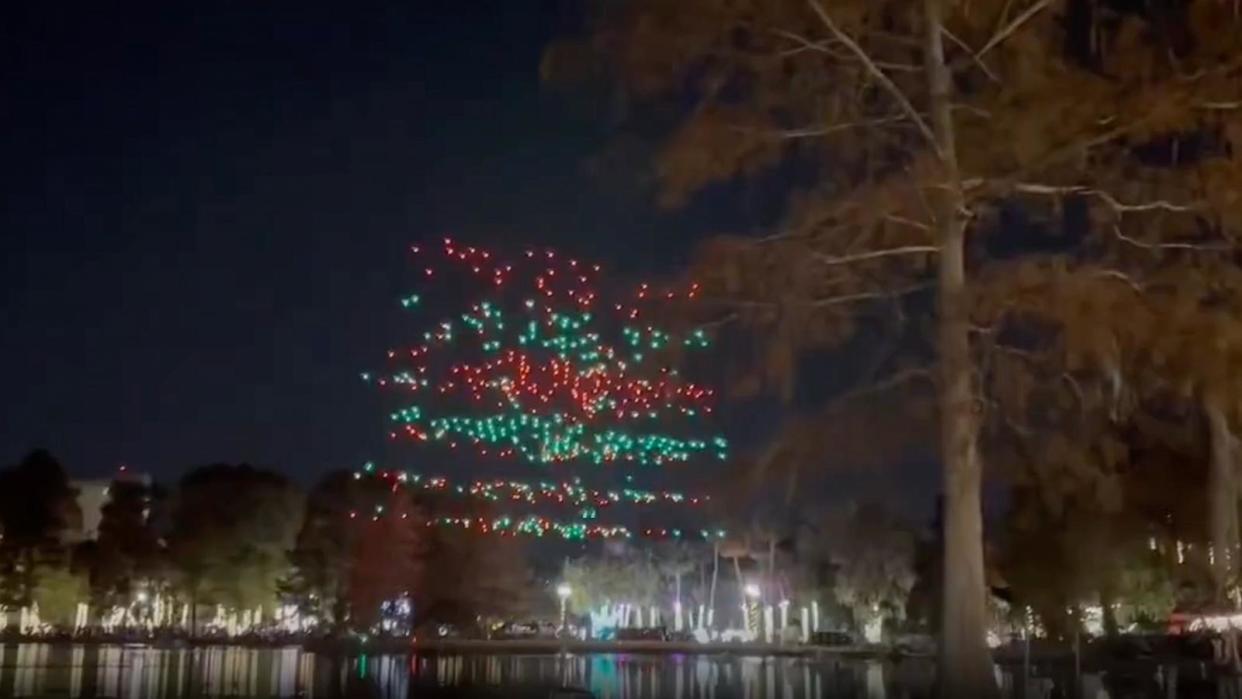
The Orlando drone show accident will undoubtedly have lasting repercussions across various sectors. The immediate aftermath involved injury and property damage, but the longer-term consequences extend far beyond the immediate incident, impacting the drone industry, legal frameworks, public perception, and the organizers themselves.
Long-Term Effects on the Drone Industry
The accident could trigger a significant reassessment of safety protocols and regulatory frameworks within the drone industry. Expect a heightened focus on risk assessment methodologies, improved redundancy systems in drone flight control, and more rigorous testing procedures for both hardware and software. We might also see increased insurance premiums for drone operators and a greater emphasis on operator training and certification, potentially leading to higher entry barriers for new operators.
This could slow down the growth of the industry in the short term, but ultimately lead to a safer and more reliable drone ecosystem. Similar incidents in other high-risk industries, such as aviation, have resulted in extensive regulatory overhauls and significant improvements in safety standards.
Legal Ramifications
The accident will almost certainly lead to multiple legal actions. Lawsuits from injured spectators and those whose property was damaged are highly probable. These lawsuits could target the drone show organizers, the drone manufacturers, and even the software developers involved. Government agencies, such as the FAA (Federal Aviation Administration) in the US or equivalent international bodies, will likely conduct thorough investigations to determine the cause of the accident and identify any violations of existing regulations.
Penalties could range from significant fines to operational suspensions or even criminal charges, depending on the findings of these investigations. The legal battles could drag on for years, consuming significant financial and human resources. Consider the lengthy legal processes following other major accidents involving technological failures, such as the Boeing 737 MAX groundings, which involved years of litigation and billions of dollars in settlements.
Impact on Public Trust in Drone Technology
The accident could significantly erode public trust in drone technology, particularly for large-scale public displays. Negative media coverage and public anxieties surrounding safety could lead to stricter public regulations and increased scrutiny of drone operations. This could hinder the development of the drone entertainment sector and limit the potential applications of drone technology in other areas. The public’s perception of safety will be crucial for the future of the industry; a similar pattern was observed after several high-profile self-driving car accidents, leading to a cautious approach to the widespread adoption of autonomous vehicles.
Long-Term Consequences for the Organizers
The organizers of the drone show face potentially devastating consequences. Beyond the immediate financial losses due to damage and legal fees, their reputation will be severely tarnished. This could lead to difficulties in securing future funding, obtaining permits for future events, and attracting sponsors. They might face significant reputational damage, making it difficult to operate in the industry again.
In the worst-case scenario, the organizers could face bankruptcy and even criminal charges. The long-term implications could extend to their personal lives and careers, mirroring the impact seen on the organizers of other large-scale events that experienced significant accidents or failures. Their ability to secure insurance or obtain licenses for future events would likely be severely hampered.
Conclusive Thoughts: Orlando Drone Show Accident
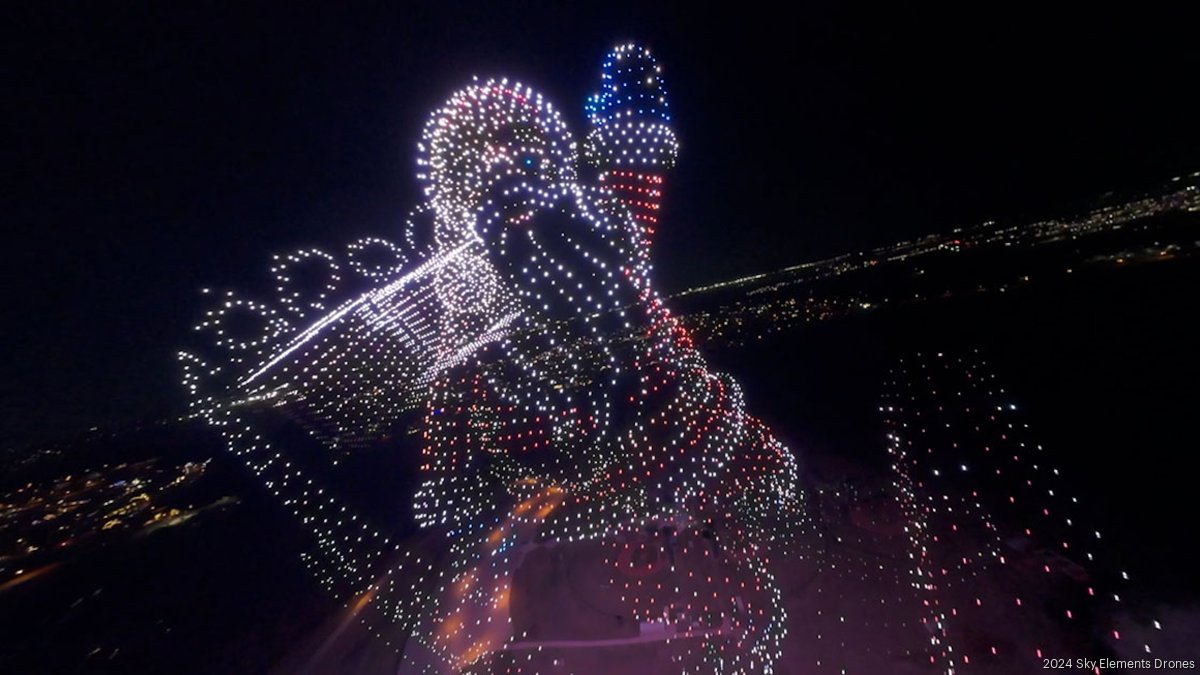
The Orlando drone show accident serves as a stark reminder of the potential risks associated with drone technology, even in seemingly well-planned and controlled environments. Understanding the technical, regulatory, and human factors involved is crucial for improving safety protocols and ensuring public trust. By learning from this incident, the drone industry can enhance safety measures and minimize the chances of similar accidents in the future.
The investigation’s findings and subsequent regulatory changes will undoubtedly shape the future of drone shows and operations worldwide.
Query Resolution
What type of drones were involved?
This will be detailed in the accident report section, specifying model and manufacturer.
Were there any arrests made following the accident?
The legal ramifications, including any potential arrests or lawsuits, will be covered in the Impact and Aftermath section.
What was the estimated cost of the damages?
A detailed breakdown of property damage and injury costs will be included in a table within the Accident Details section.
How many drones were involved in the show?
The exact number of drones used in the show will be provided in the Accident Details section.
